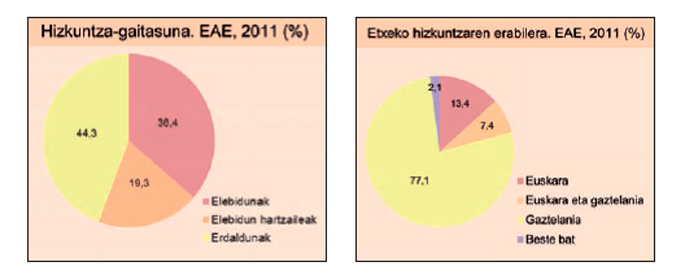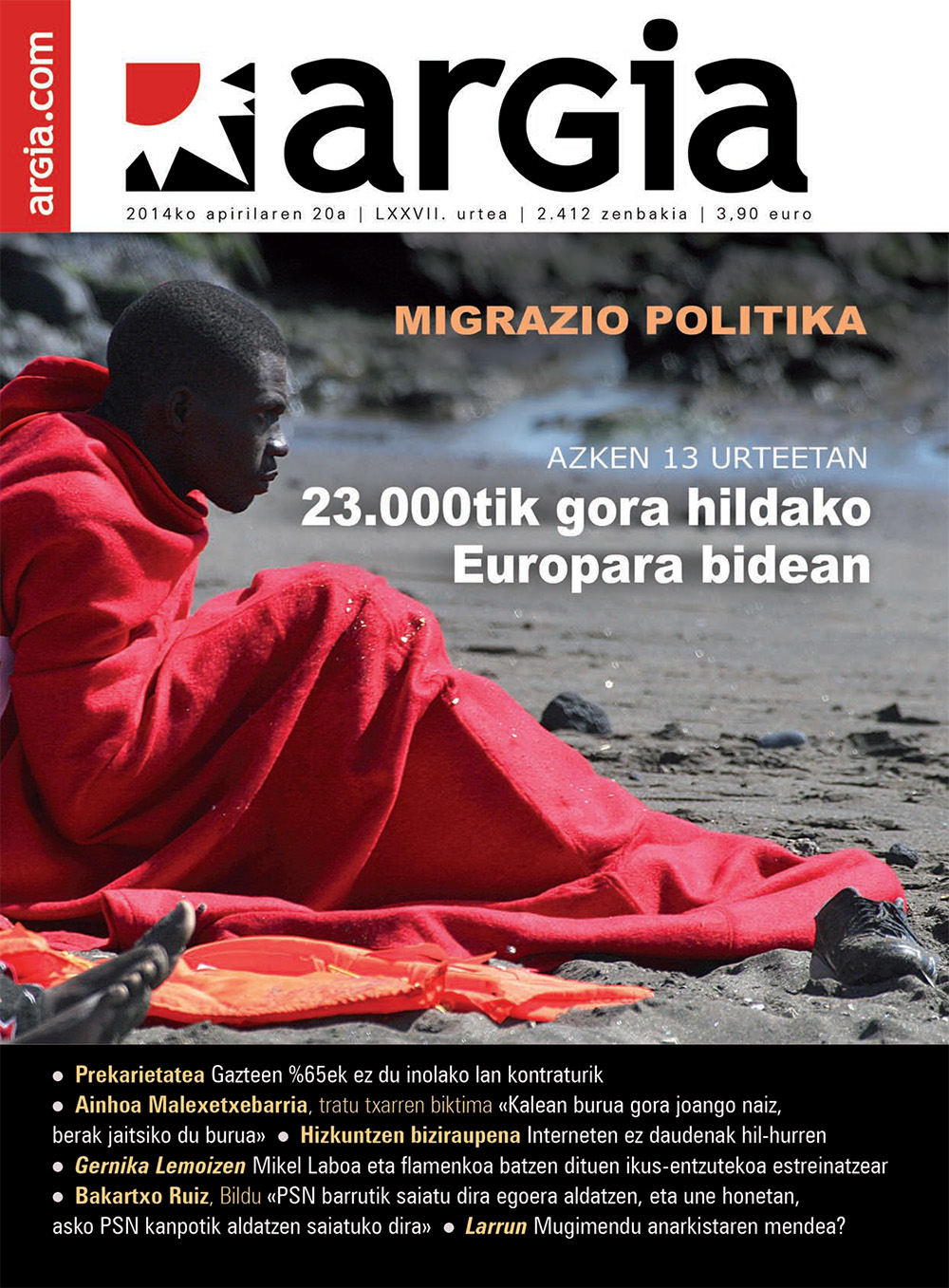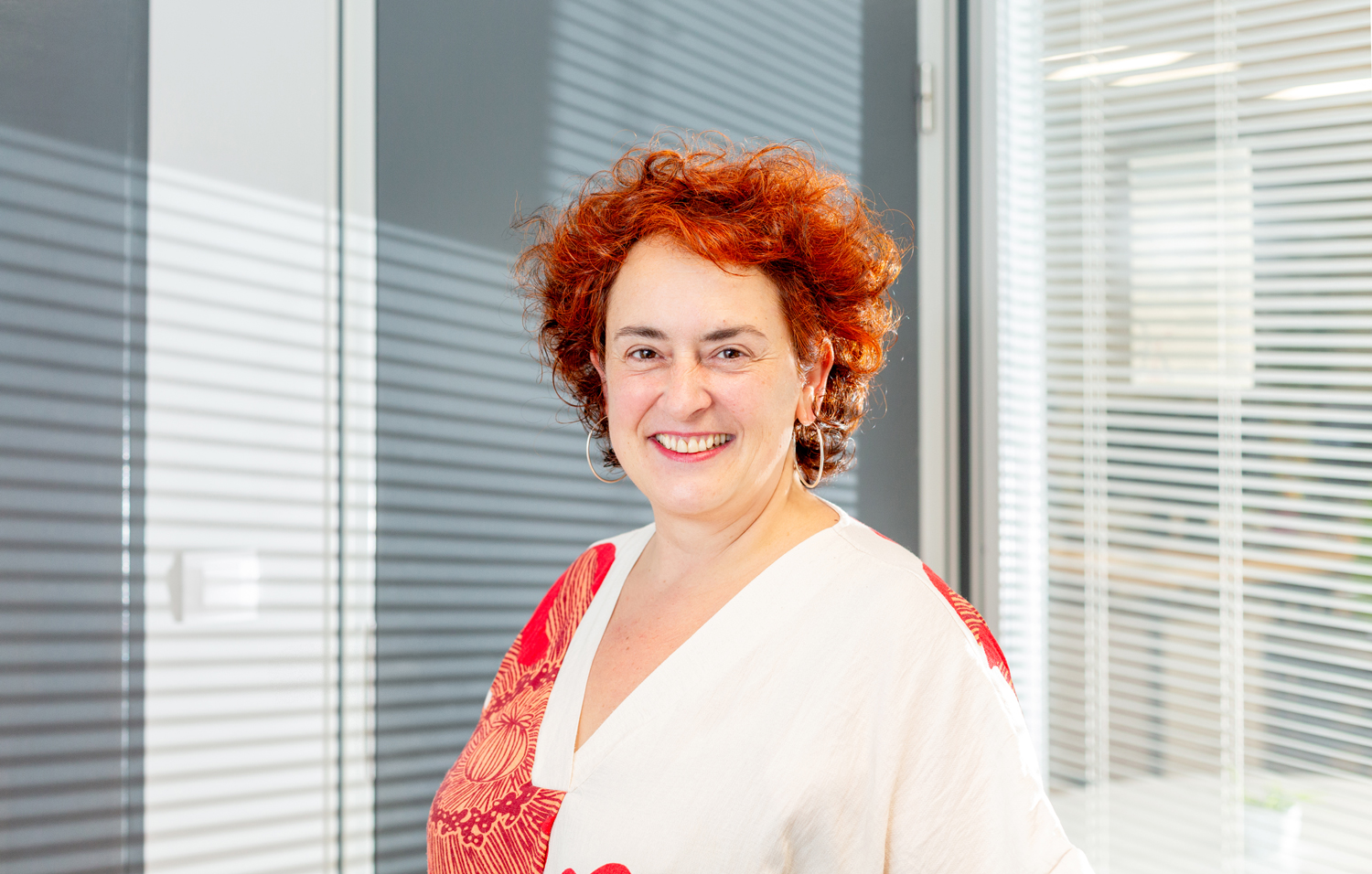Knowledge grows 14.5 points, while domestic use falls one point

5. The Socio-linguistic Map says so. The data collected in the 2011 Population and Housing Census were not surprising; we knew that the knowledge of the Basque Country is constantly increasing and that in the informal spheres the use has begun to decline.
If compared, the steps taken in knowledge are significant. Currently, 36.4% of the population knows Euskera well and 30 years ago 22% knows it well. Today, the one who knows nothing about Euskera is 44.3% and approximately 65.9% 30 years ago. In the case of children under 20 years of age, more than 70% of Basques are Basque. 30 years ago, they didn't reach 20 percent. By age, the increase in knowledge has been 14.5 points.
One point underneath is use, not global use, but domestic use. 20 years ago, more houses than today had all their members in Spanish. However, at that time the use of Euskera at home was 21.8% and today it is 20.8%. According to the assessment of the Vice-Ministry of Linguistic Policy, this means, on the one hand, that the sustained growth in capacity has not meant a growth in domestic use, and on the other, that the Euskaldunes of today do not use Euskera at home as much as those of 20 years ago.
Overall use has not decreased, but has risen by 7 points. The trend in recent years is that the use cannot be maintained in informal spaces, while it has increased in the formal sphere (municipalities, health services, the world of work...).
There are no breathing spaces without proper speakers. Native speakers are the support, the oraceration, the mainstay and the foundation of the respiratory zones.
But let's start at the beginning: what are the respiratory zones? The word Arnasa is a word translated into Basque... [+]
Kaleko 71.000 elkarrizketa eta 227.900 solaskide behatu dituzte UEMAko herrietan, eta 2017koa baino ikerketa are sendoagoa burutu dute. Erabilera orokorra ez da ia aldatu: bostetik hiru aritzen dira euskaraz. Adina eta generoaren arabera badira desberdintasun batzuk.























